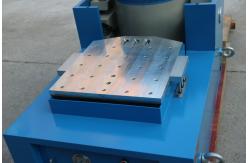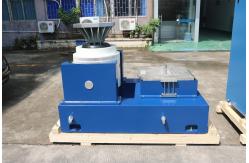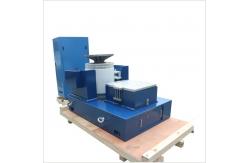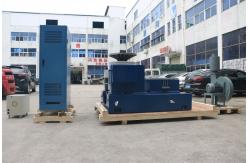Electrodynamic Vibration Shaker for Electrical/Electronic (E/E) Components Testing
|
Detailed Product Description
Electrodynamic Vibration Shaker for Electrical/Electronic (E/E) Components TestingIn the contemporary era of advanced technology, electrical and
electronic (E/E) components are the building blocks that power a
vast array of devices, ranging from smartphones and laptops to
complex industrial control systems and aerospace avionics. The
reliability and performance of these components are of utmost
importance, as any malfunction can lead to system failures, reduced
product lifespan, or even safety hazards. Among the various
environmental factors that can affect E/E components, vibration is
a significant one. An electrodynamic vibration shaker designed
specifically for E/E components testing has emerged as an essential
tool in ensuring the quality and durability of these critical
components. 1. The Significance of Vibration Testing for E/E Components Real - World Vibration Exposure E/E components are exposed to vibrations in numerous real - world
scenarios. In a moving vehicle, for example, components in
automotive electronics, such as engine control units and in - car
entertainment systems, are subjected to vibrations from the engine,
road irregularities, and the vehicle's suspension. In industrial
settings, vibrations from heavy machinery can impact the
performance of E/E components used in factory automation and
monitoring systems. Even in consumer electronics like smartphones,
components can experience vibrations during normal use, such as
when the device is carried in a pocket while walking. These
vibrations can cause mechanical stress on the components, leading
to issues like loose connections, damaged solder joints, or
misaligned components. Ensuring Component Reliability Vibration testing of E/E components aims to simulate these real -
world vibrations in a controlled laboratory environment. By
subjecting components to vibrations, manufacturers can identify
potential weaknesses in the design and manufacturing processes. For
instance, in the case of a printed circuit board (PCB) with
multiple components soldered onto it, vibration testing can reveal
if the solder joints are strong enough to withstand vibrations. If
a component's connection to the PCB becomes loose due to
vibrations, it can cause intermittent electrical connections,
leading to malfunctions in the device. Vibration testing helps in
ensuring that E/E components can maintain their electrical and
mechanical integrity under vibration, thus enhancing the overall
reliability of the products in which they are used. 2. Understanding the Electrodynamic Vibration Shaker Working Principle An electrodynamic vibration shaker operates on the principle of
electromagnetic induction. It consists of a moving coil placed
within a magnetic field generated by a permanent magnet or an
electromagnet. When an electrical current is applied to the moving
coil, according to Fleming's left - hand rule, a force is
generated. This force causes the coil to move, and since the coil
is connected to a platform (the shaker table) on which the E/E
components are placed, the movement of the coil is transferred to
the shaker table, resulting in vibrations. To generate different
vibration profiles suitable for E/E components testing, the
electrical current supplied to the coil is precisely controlled.
The frequency of the vibration is determined by the frequency of
the electrical current, and the amplitude can be adjusted by
varying the magnitude of the current. Components of the Electrodynamic Vibration Shaker The electrodynamic vibration shaker comprises several key
components. The power amplifier is responsible for supplying the
necessary electrical power to drive the moving coil. It takes a low
- level control signal from the controller and amplifies it to the
high - power levels required to generate significant vibrations.
The controller serves as the brain of the system. Operators can
input specific vibration parameters into the controller, such as
the frequency range, amplitude, and the type of vibration profile
(e.g., sinusoidal, random). The controller then generates the
appropriate control signals to the power amplifier. The shaker
table is designed to be a flat and rigid platform to ensure uniform
vibration transfer to the E/E components being tested.
Additionally, sensors, such as accelerometers, are placed on the
shaker table and the components to measure the actual vibration
levels. These sensors provide feedback to the controller, enabling
real - time adjustments to maintain the desired vibration profile. 3. How the Electrodynamic Vibration Shaker Facilitates E/E
Components Testing Simulating Different Vibration Sources For E/E components testing, the electrodynamic vibration shaker can
simulate various vibration sources. To mimic the vibrations in an
automotive environment, the shaker can generate vibrations with
frequencies corresponding to the engine's RPM range and amplitudes
that reflect the roughness of different road surfaces. In the case
of industrial applications, it can produce vibrations with
frequencies and amplitudes that match the characteristics of the
machinery in the factory. The ability to simulate these diverse
vibration sources allows for comprehensive testing of E/E
components, ensuring they can perform reliably in different
operating conditions. Customizing Vibration Profiles One of the advantages of using an electrodynamic vibration shaker
for E/E components testing is the ability to customize vibration
profiles. Different E/E components may require different vibration
profiles based on their intended use and the expected vibration
environment. For a sensitive sensor in a medical device, the
vibration profile may focus on low - frequency, low - amplitude
vibrations to ensure that the sensor's accuracy is not affected. In
contrast, for a component in a high - vibration industrial setting,
the vibration profile may emphasize high - frequency, high -
amplitude vibrations. The controller of the vibration shaker allows
operators to program these specific vibration patterns, providing a
tailored testing approach for each type of E/E component.
4. Performance Features of the Electrodynamic Vibration Shaker for
E/E Components Testing High - Precision Frequency Control The electrodynamic vibration shaker offers high - precision
frequency control, which is crucial for accurate E/E components
testing. The frequency accuracy is typically within ±0.1% of the
set value. This level of precision allows for the precise
replication of the vibration frequencies that E/E components may
encounter in real - world scenarios. For example, when testing a
component in a wireless communication device, the shaker can
accurately generate the specific frequencies that may cause
interference or affect the device's signal integrity. The ability
to control the frequency with such accuracy ensures that the test
results are reliable and repeatable. Precise Amplitude Control The amplitude of the vibration is another critical aspect. The
electrodynamic vibration shaker can precisely control the
amplitude, with an accuracy of around ±1% of the set acceleration
value. This is important because different E/E components may have
specific amplitude requirements based on their design and intended
use. For instance, a component in a consumer electronics device may
require a relatively low - amplitude vibration test to ensure that
it can withstand normal handling vibrations, while a component in a
military - grade electronic system may need to be tested with
higher amplitude vibrations to simulate more extreme operating
conditions. The precise amplitude control allows manufacturers to
test their components under the exact vibration levels they are
likely to encounter in actual use. Low Residual Vibration In E/E components testing, minimizing residual vibration is
essential. Residual vibration refers to the unwanted vibration that
remains in the system even when the desired vibration profile is
not being actively generated. A high - quality electrodynamic
vibration shaker is designed to have low residual vibration levels.
This is crucial because even small amounts of residual vibration
can affect the test results, especially when testing sensitive E/E
components. By reducing residual vibration, the shaker ensures that
the measured vibrations are solely due to the intentional test
signals, providing more accurate and reliable test data. Robust and Reliable Construction Given the repetitive and demanding nature of E/E components
testing, the electrodynamic vibration shaker is built with robust
and reliable construction. The shaker table and its associated
mechanical components are made of high - strength materials such as
aluminum or steel to withstand the high forces generated during
vibration testing. The electrical components, including the power
amplifier and controller, are designed to operate continuously
under high - stress conditions without degradation. The system is
also equipped with safety features, such as overload protection and
emergency stop mechanisms, to protect the test specimen, operators,
and the equipment itself. This robust construction ensures that the
electrodynamic vibration shaker can perform a large number of tests
over its lifespan without significant maintenance, reducing
downtime and increasing the efficiency of the testing process. 5. Applications of the Electrodynamic Vibration Shaker in E/E
Components Testing Testing of Integrated Circuits Integrated circuits (ICs) are the heart of many E/E devices. The
electrodynamic vibration shaker is used to test ICs for their
ability to withstand vibrations. For example, in the manufacturing
of ICs for smartphones, the shaker can simulate the vibrations that
the phone may experience during normal use and transportation. By
subjecting the ICs to these vibrations, manufacturers can detect
any potential issues such as cracks in the chip, loose connections
within the package, or degradation of the electrical performance.
This helps in improving the reliability and performance of the ICs,
and ultimately, the smartphones in which they are used. Evaluation of Sensors Sensors are widely used in E/E systems for various applications,
such as environmental monitoring, motion detection, and control
systems. The electrodynamic vibration shaker is used to test
sensors to ensure their accuracy and functionality under vibration.
For instance, a gyroscope sensor used in a navigation system needs
to maintain its accuracy even when the device is subjected to
vibrations. The vibration shaker can simulate the vibrations that
the sensor may encounter in a moving vehicle or an aircraft,
allowing manufacturers to evaluate and optimize the sensor's design
to reduce the impact of vibrations on its performance. Testing of PCB Assemblies Printed circuit board (PCB) assemblies are complex structures that
house multiple E/E components. The electrodynamic vibration shaker
is used to test PCB assemblies to ensure the integrity of the
components and their connections. By subjecting the PCB assemblies
to vibrations, manufacturers can identify any loose solder joints,
component displacements, or electrical failures. For example, in
the production of PCBs for industrial control systems, the
vibration shaker can simulate the vibrations from the factory
machinery. This helps in ensuring that the PCB assemblies can
withstand the harsh vibration environment of the industrial setting
and operate reliably. 6. Conclusion The electrodynamic vibration shaker for electrical/electronic
components testing is an invaluable tool in the electronics
industry. By accurately simulating real - world vibrations and
allowing for customized testing, it enables manufacturers to
evaluate and improve the reliability and performance of E/E
components. With its high - precision frequency and amplitude
control, low residual vibration, and robust construction, this
equipment plays a crucial role in maintaining the quality of E/E
components and driving the advancement of the electronics industry.
If your business is involved in the design, manufacturing, or
quality control of E/E components and you require a reliable
vibration testing solution, consider reaching out to our team of
experts. We can provide you with detailed information on how our
electrodynamic vibration shakers can be tailored to meet your
specific E/E components testing needs. |
||||||||||||||||||||||||||||||||
| Product Tags: Electronic Vibration Shaker E/E Components Vibration Shaker Electrical Vibration Shaker |
Related Products
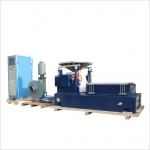
|
20kN Random Vibration Testing Equipment Meets ISTA 6 Testing Standard |
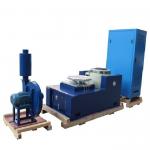
|
Electrodynamic Shaker Systems Runs Sweep Vibration Test Meets IEC 60068 2 6 Vibration Testing |
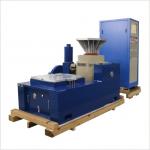
|
20kN Vibration Shaker Machine Performs Shock and Vibration Testing for Automotive Field |
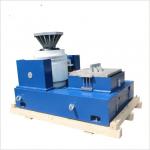
|
High Frequency Vibration Table For Testing Satellite And Spacecraft Components |
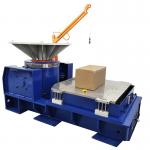
|
Packaging Vibration Testing Equipment Runs Random Vibration Testing For Dummie |

|
Vibration Test Chamber Performs Temperature And Vibration Testing For Automotive Field |
Email to this supplier

